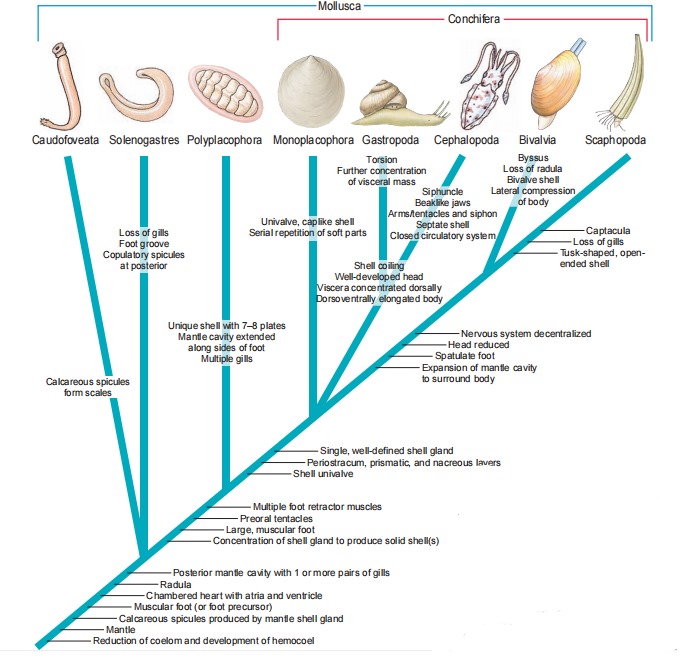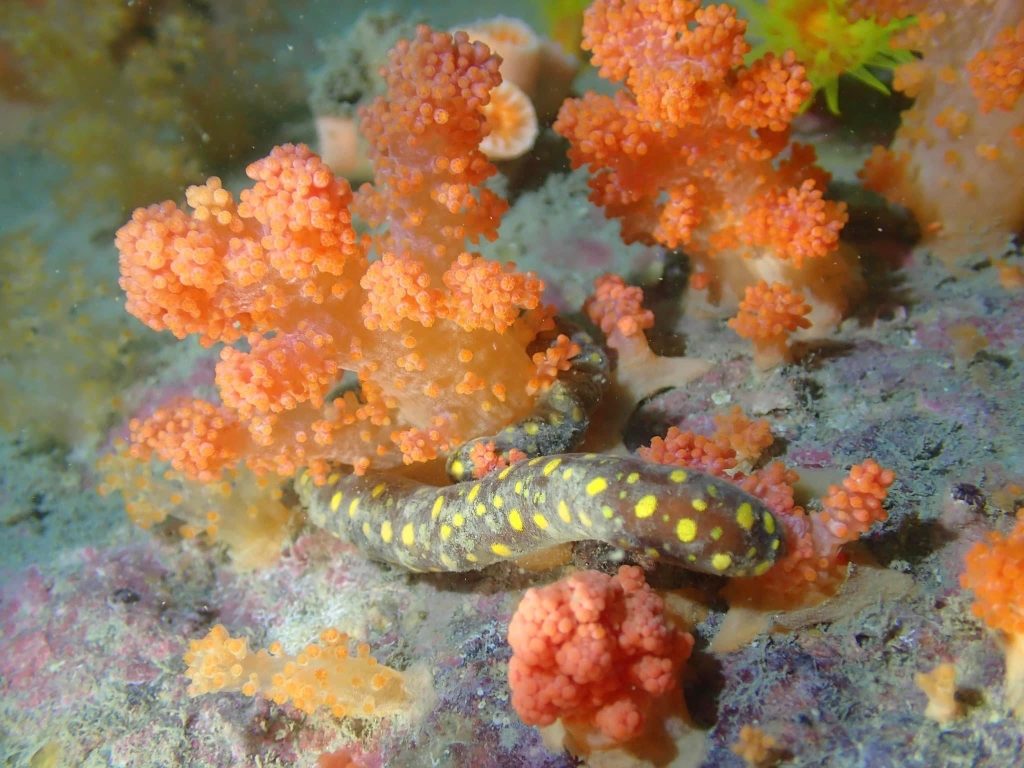For more than 50 years five classes of living molluscs were recognized: Amphineura, Gastropoda, Scaphopoda, Bivalvia (also called Pelecypoda), and Cephalopoda. Discovery of Neopilina in the 1950s added another class (Monoplacophora), and Hyman contended that solenogasters and chitons were separate classes (Aplacophora and Polyplacophora), lapsing the name Amphineura. Subsequently, Aplacophora was divided into the sister groups Caudofoveata and Solenogastres. Members of both groups are wormlike and shell-less with calcareous scales or spicules in their integument. They have reduced heads and lack nephridia. In spite of these similarities, there are important differences between groups.
Members of class Caudofoveata comprise about 120 species of wormlike, marine organisms ranging from 2 to 140 mm in length. They are mostly burrowers and orient themselves vertically, with the terminal mantle cavity and gills at the entrance of the burrow. They feed primarily on microorganismsand detritus. They possess an oral shield, an organ apparently associated with food selection and intake, as well as a radula. They have one pair of gills. They are dioecious. The body plan of caudofoveates may have more features in common with the ancestor of molluscs than any other living group. This class is sometimes called Chaetodermomorpha.
Solenogasters are a small group of about 250 species of marine animals similar to caudofoveates. Solenogasters, however, usually have no radula and no gills (although secondary respiratory structures may be present). Their foot is represented by a midventral, narrow furrow, the pedal groove. They are hermaphroditic. Solenogasters are bottom-dwellers, and often live and feed on cnidarians. This class is sometimes called Neomeniomorpha.

Monoplacophora were long thought to be extinct; they were known only from Paleozoic shells. However, in 1952 living specimens of Neopilina (Gr. neo, new, – pilos, felt cap) were dredged up from the ocean bottom near the west coast of Costa Rica. About 25 species of monoplacophorans are now known. These molluscs are small and have a low, rounded shell and a creepin foot. The mouth bears a characteristic radula. They superficially resemble limpets, but unlike most other molluscs, have some serially repeated organs.

These animals have three to six pairs of gills, two pairs of auricles, three to seven pairs of metanephridia, one or two pairs of gonads, and a ladderlike nervous system with 10 pairs of pedal nerves. Such serial repetition occurs to a more limited extent in chitons. Why should there be repeated sets of body structures in these animals? Body structures repeat in each segment of an annelid worm. Are the repeated structures indications that molluscs had a segmented (metameric) ancestor? In the past, some biologists thought so, but current research indicates that Neopilina shows pseudometamerism, and that molluscs did not have a metameric ancestor.
Useful External Links
- Mollusca: Caudofoveata, Monoplacophora, Polyplacophora, Scaphopoda, Solenogastres. 2015. In: Structure and Evolution of Invertebrate Nervous Systems. Schmidt-Rhaesa, Harzsch, Purschke eds. p. 172-189. Oxford University Press by Julia Sigwart
- Mollusca: Caudofoveata, Monoplacophora, Polyplacophora, Scaphopoda, Solenogastres. In: Structure and Evolution of Invertebrate Nervous Systems, OUP by Lauren Sumner-Rooney
- Phylogenomic reconstruction of Solenogastres (Mollusca, Aplacophora) informs hypotheses on body size evolution by Katharina M. Jörger

